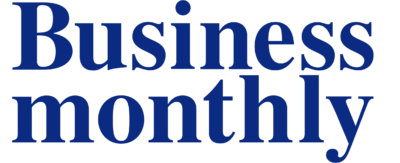Volatile geopolitics, emerging technologies such as artificial intelligence, environmental changes, and unpredictable political decisions are transforming the global business landscape.
According to Andras Vicsek, Chief Innovation Officer at Maven7, utilizing Organizational Network Analysis (ONA) tools can help local businesses benefit from adopting a data-driven approach to build healthier, more agile workplaces.
The interview was edited for length and clarity.
What are ONA tools?
ONA is a data-driven tool that maps companies’ formal and informal relationships. Unlike traditional organizational charts that show reporting lines, ONA reveals how people actually connect, collaborate, and influence each other. That includes who they go to for advice, who they trust, and who drives change.
This “invisible layer” of interpersonal dynamics is often where the real power and potential of an organization lie.
ONA’s visualizations and insights are based on real-time data, enabling leaders to understand how knowledge flows, where silos exist, and which employees can influence others’ decisions.
Companies can apply ONA during digital transformations, mergers and acquisitions, leadership transitions, or talent retention and engagement. The process involves collecting communication or survey data to build a network map, identifying informal change leaders, collaboration gaps, and opportunities for targeted interventions. That leads to faster, effective change management, improved cross-functional collaboration, and better alignment between strategy and execution.
Accordingly, by tailoring plans and implementation approaches, HR professionals would ensure smoother transformation, higher employee engagement, a stronger sense of ownership among staff, and bridge gaps throughout the corporate hierarchy.

What are some common misconceptions about ONA?
One misconception is that ONA is only about technology and data. It’s about people and understanding trust, collaboration, and informal leadership.
Another misconception is that ONA tools are intrusive. They are not as they are designed to respect privacy and empower employees.
Which trends are shaping ONA tools?
Hybrid work, digital transformation, and the need for agility are making ONA more relevant than ever.
Company leaders want to understand how distributed teams collaborate, identify organizational silos, promote inclusion and well-being, monitor team cohesion, identify burnout risks, and support diversity initiatives.
ONA tools also identify unconscious corporate biases and suggest corrective actions, leading to healthier and more connected workplaces.
How can Egyptian businesses benefit from ONA?
Trust and relationships are central to the growth and development of Egyptian businesses, making it exceedingly critical to map those relationships.
That is something that ONA tools can easily do. IT helps HR professionals identify their “hidden champions,” improve communication, and adapt quickly to change.
This would enable Egyptian family businesses and companies to scale up and navigate growth or transformation effectively.
Finally, what advice would you give to benefit from ONA tools?
Start with curiosity. Be open to discovering this parallel structure. Accordingly, start with a pilot project in one department or during a specific initiative.
Use the resulting insights and share the findings transparently for the next project. The most successful transformations are those that prioritize people and relationships at their core.




